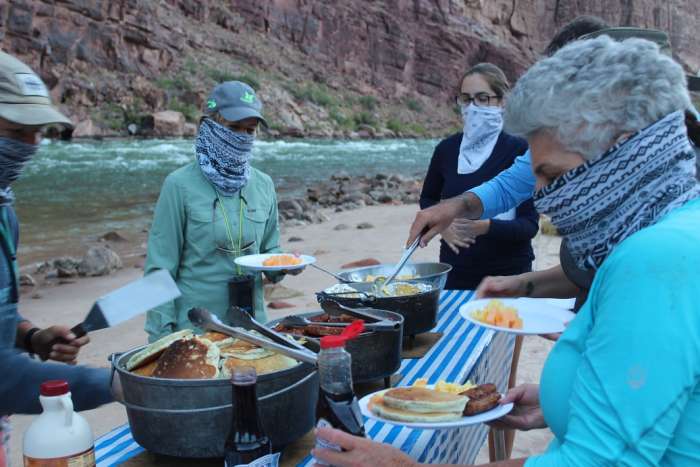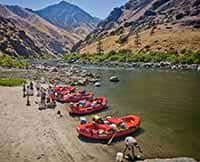Planning for the Unexpected: A Guide to Travel Insurance
Guest blog provided By Susan Doktor
Since its onset, the coronavirus has shaken the very bedrock of our lives: who we see, where we go, how we work, and even how we play. Many of us had our hearts set —and our hard-earned cash spent—on traveling, only to see our plans upended by stay-at-home orders, global entry restrictions, flight cancellations, and more. We didn’t expect to be grounded, nor did we expect to lose money in the process.
While few travelers could have foretold the onslaught of the coronavirus crisis, many understood that travel itself tends to be unpredictable. They purchased travel insurance to hedge their bets against the events that more commonly upset travel plans when they planned their trips pre-COVID-19. Unfortunately for those cautious travelers, trip cancellation claims against those policies were largely denied. The travel insurance industry defended itself in one of two ways. In some cases, insurers characterized the pandemic as a “force majeure”— more commonly called Acts of God—which are not covered under most policies. Other insurers claimed the results of the global pandemic were “foreseeable” and, therefore travelers who made plans once the crisis was discussed in the news, were ineligible for reimbursement under the terms of their policies.
If those two positions sound contradictory to you, you’re not alone. The travel insurance industry took a lot of heat for their double-fisted COVID claims denial. Some have amended their policies to make them more sellable in the post-coronavirus era. But the question remains, is travel insurance worth the investment now? If so, how can you find explore a travel insurance policy for your needs—and for our times? Let’s take a look at how travel insurance works and see if we can sort out the answers to those questions and more.
Why Buy Travel Insurance
Travel insurance can’t prevent the mishaps that sometimes upset our travel plans. It can’t help you make a tight connection when your first flight was delayed. It can’t magically find your lost baggage or prevent an avalanche from ravaging the idyllic mountain cottage you booked for your hiking sojourn in the Rockies. And travel insurance can’t replace the hopes and dreams that inspired you to plan your adventure in the first place, so hold on to those. But the right travel policy can help take the sting out of your disappointment when things go awry. Depending on the policy you purchase, insurance compensates you financially for the vacation setbacks we mentioned—missed flights, natural disasters, luggage fiascos—and more.
You know how insurance works. You spend a little money to protect a larger amount of money or a particular asset. In the case of travel insurance, you don’t have to spend much for considerable protection. The average travel insurance policy costs between 4% and 10% of the total prepaid, non-refundable costs of your vacation. (Pay attention to those words prepaid and non-refundable because we’ll come back to it later.) Many travelers decide that the cost of a travel insurance policy is well worth just the peace of mind that comes with it, even if they never make a claim.
Cancellation Coverage: Currently Controversial
Travel insurance policies are highly customizable. Given the uncertainty we’re currently facing—including rolling local and state shutdowns and the sudden appearance of COVID-19 hotspots—cancellation coverage is one type you may want to consider when planning a trip.
Travelers typically pay various upfront expenses in advance of their journeys. Some of the larger ones include airline tickets and hotel deposits, but smaller ones like national park entrance fees and ski passes can add up, too. Many of these fees are non-refundable. Should you have to cancel a trip, your cancellation policy will reimburse you for at least some of the non-refundable expenses you incurred when you planned your vacation. Each policy has its own restrictions. Particularly in the age of COVID-19, there can be many. That’s why it’s important to read any policy thoroughly before you purchase it.
Trip interruption coverage is a sub-species of cancellation coverage. It’s designed to reimburse your non-refundable expenses if you have to cut your trip short once it’s in progress due to a covered emergency. Some trip interruption policies will pay to fly you back to your destination once your emergency is resolved. Again it’s important to understand what constitutes an emergency in the eyes of your insurer, but typically illness, injury, and family emergencies back home do qualify.
Cancel for Any Reason (CFAR) coverage is the Mighty Mississippi of cancellation policies and the most expensive kind you can buy. Typically, CFAR costs about 40% more than standard cancellation insurance. It’s pretty much what it says on the label. So long as you give your insurer sufficient notice—normally 48 hours—you can recover your non-refundable expenses no matter why you decide to cancel your trip. But there is one caveat: canceling your trip because you are concerned about contracting COVID-19 may not be covered under a policy. If you decide to pay the higher cost of CFAR coverage, be sure you’re getting what you think you are paying for.
Travel Medical Insurance: Essential for International Travel
If you have a US health insurance policy and travel inside the US and its territories, it’s likely that your coverage travels with you, particularly for emergency medical care. But nearly all US health policies stop at the border when you travel internationally. Notably, Medicare doesn’t pay for healthcare outside of the US. So if you plan to ride the rapids of Costa Rica’s Pacuare, travel medical insurance is vital. It was before the global pandemic and it’s more so now.
Generally speaking, travel medical policies cover diagnostic services, hospitalization, surgery, and emergency transportation. Prescription medicine coverage is less common. Once again, we need to add the COVID-19 caveat. Policies differ. Be sure the policy you select includes coverage for treatment if you fall ill with the coronavirus while traveling. You may also want to check specifically to see if the cost of testing is covered, as some policies do exclude it.
Travel medical insurance is one of the world’s greatest bargains—if you have to use it. Some insurers advertise travel policies that cost under a dollar a day, but realistically you should expect to pay about $10 a day for comprehensive coverage. Weigh that expense against the cost of a single trip to the emergency room or the cost of a medical flight home and travel medical insurance is the proverbial no-brainer.
Coverage Add-Ons for Adventure Travelers
You knew there had to be one more catch, right? Some of adventure travelers’ favorite activities are characterized by insurers as extreme sports. The cost of treatment for the injuries you sustain when you’re spelunking or hang gliding may not be covered by your travel medical policy. You also may be unable to collect under your trip cancellation or interruption coverage for injuries sustained while following your extreme sporting heart. While the vast majority of river rafters enjoy their journeys without incident, choosing optional extreme sports can make sense when you book a rafting trip.
Tips for Saving on Travel Insurance
Travel insurance resembles other kinds of insurance in ways you’re likely familiar with. It comes with coverage limits, reimbursement schedules, and, in some cases, a deductible. You can lower the cost of your travel insurance policy by selecting lower coverage limits, a smaller reimbursement percentage, and a higher deductible. The internet makes it easy to scope out the best deals on travel insurance. The trick is to be sure you are comparing policies with identical limits, reimbursement schedules, and deductibles before making a decision based purely on cost. You might want to create a spreadsheet to keep the information you collect organized as you figure out which policy best suits your needs. This is one instance when talking to a real-live, old-fashioned insurance agent may save you some time and help you make the most informed purchase possible.

Related Trips

Costa Rica Vacation Package
Experience the legendary Pacuare River and a world-class, riverside eco lodge.

Grand Canyon Rafting Trips
Experience a 3 to 7 day expedition filled with whitewater excitement, spectacular waterfalls waterfalls and starry nights.

Rogue River Lodge to Lodge Trip
One of the most unique rafting vacations in the world. Astounding wildlife, scenery and historic river lodges each night.

Hells Canyon Rafting Trip
The deepest river gorge in North America and some of the largest whitewater rapids in the Pacific Northwest.

Cataract Canyon 4 Day Trip
Experience 4 Days through the heart of Canyonlands National Park.














